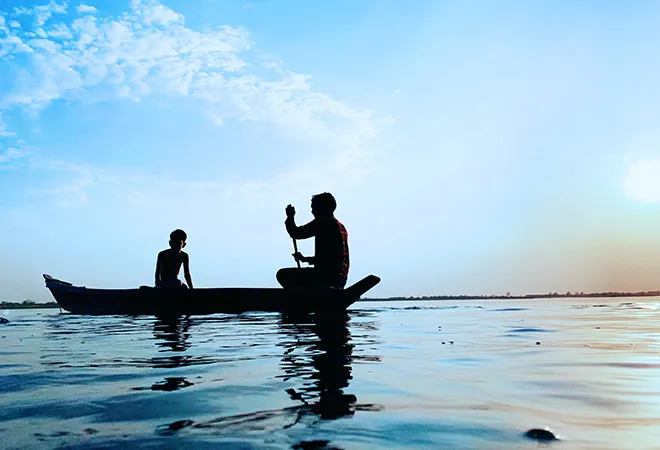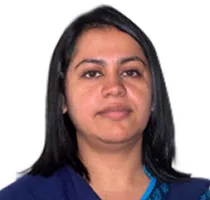
In Assam, people are still reconciling with the initial shock of publication of the final list of the National Register of Citizens (NRC). On 31 August, the final list was unveiled and it included 3,11,21,004 persons as India’s citizens and excluded another 19,96,657 persons. People are now trying to figure out and plan their next step.
NRC was conducted under the supervision of the Supreme Court of India, in response to a writ petition filed by an Assam based non-governmental organisation, Assam Public Works (APW), which aimed to protect the rights of the indigenous people of Assam. Notably, APW is dissatisfied with the outcome of the NRC. The organisation has filed an affidavit in the Supreme Court demanding 100% reverification of the NRC.
Today, a feeling of despair is prevailing amongst the people because claims are made about the inclusion of foreigners in the list, while genuine Indian citizens have been excluded. I visited the Barak Valley in Assam to gain a first-hand understanding of the people’s responses from the ground, post-NRC. Three days in the region allowed me to interact with a cross-section of the people, cutting across religious and ethnic divides.
Bengali speaking people have been inhabitants of the Barak Valley for a long time. Before the Partition of India in 1947, Karimganj was part of the Sylhet district, which was in Assam in undivided India.
Barak Valley comprises of three Bengali speaking districts: Cachar, Karimganj and Hailakadi in southern Assam. The region is strategically important, as it is the only land link to Mizoram and Tripura for the rest of the country. Barring Hailakandi, districts of Cachar and Karimganj have borders with Bangladesh.
Nevertheless, Bengali speaking people have been inhabitants of the valley for a long time. Before the Partition of India in 1947, Karimganj was part of the Sylhet district, which was in Assam in undivided India. In 1874, Sylhet was broke away from greater Bengal and merged with Assam to make the state commercially lucrative because of the district’s rich resources. Karimganj came to India following a referendum during Partition.
In the valley, Hindus maintain a marginal majority and Islam is the next largest religion practised by the people. According to the 2011 census, Muslims are in majority in Karimganj and Hailakandi districts. In NRC final lists, Karimganj and Hailakandi are the two districts which had a higher number of inclusions. Inclusions in Karimganj and Hailakandi are 92.33%, and 91.96% respectively. Amongst the three districts, exclusion in Cachar is highest. Around 15 percent of the applicants have been left out in the final list.
In the valley, Hindus maintain a marginal majority and Islam is the next largest religion practised by the people.
The percentage of the inclusions in the three districts give an impression that the people of Barak Valley are less affected by the NRC. A closer glance at the numbers on the ground paints a different story. In Cachar district itself, 15 people in hundred are excluded and Cachar district has 17,36,319 persons in total (2011 Census). Hence, simple arithmetic will highlight the number of the people affected and its impact on the society. Similarly, the population in Karimganj district is 12,17,002 (2011 Census) and in Hailakandi district is 6,59, 260 (2011 Census).
 Source: With district-wise data, Assam govt. pushes for NRC, The Hindu, 1 August 2019.
Source: With district-wise data, Assam govt. pushes for NRC, The Hindu, 1 August 2019.
The persons who made it to the final list are thanking their fate, but this did not reduce their suffering since names of many of their family members and friends are missing in the final list. Today, people have been questioning the fairness of the NRC process.
Many of the families fear separation from their near and dear ones, especially those who could not make it to the final list. They fear their loved ones being detained in detention camps meant for confining the foreigners in Assam. Authorities have decided to establish 11 detention camps in districts like Goalpara, Barpeta, Dima, Hasao, Kamrup, Karimganj, Lakhimpur, Nagaon, Nalbari, Sivasagar and Sonitpur. The first of its kind is under construction in Goalpara, a district that will house around 3,000 people. Each of these centres will have a capacity of at least 1,000 people. Currently, there are six detention centres operating in the district jail. Families of the persons are holding the NRC responsible for infusing uncertainty in their lives.
Many of the families fear separation from their near and dear ones, especially those who could not make it to the final list. They fear their loved ones being detained in detention camps meant for confining the foreigners in Assam.
The government promised that excluded persons would continue to enjoy all the rights of a citizen. If one has exhausted all other options, the government has also promised to provide the legal option to appeal for a redressal. In this respect, the first step would be to appeal to the Foreigners Tribunal (FT). People can approach the High Court and the Supreme Court for reconciliation if they are not satisfied with the FT’s decision. Around 400 FTs are planned to be established for hearing these cases. Already, the work of establishing 200 FTs have been initiated and rest of the 200 will be set up in the coming months.
People are apprehensive about the capacity of the FT’s timely delivery of justice. At present, three to four lakh cases are pending in 100 of the existing tribunals. Recently, 221 members, equivalent to the judge position, have been appointed into FTs for hearing of the cases, but people feel it is insufficient to deal with such a large number of appeals. Besides, applying to the FTs will require financial resources. Not all the applicants will have adequate financial support to pursue their case.
The apprehension expressed by some, is that the exploitation of the situation by some vested groups might open up a new dimension in the identity politics in Assam.
The NRC is expected to end the illegal Bangladeshi migrant issue, which has been a much debated topic in Assam. The migrant debate has been a point of tension in Assam’s multicultural and multi-ethnic society. During the 1980s, Assam witnessed a bloody, ethnic conflict over the issue of infiltration from Bangladesh. The people of Assam wanted a conclusion of peace and development for the region.
Post-NRC, people expressed scepticism of fragmentation of the society along ethnic and religious lines. The apprehension expressed by some, is that the exploitation of the situation by some vested groups might open up a new dimension in the identity politics in Assam.
It will be fruitful to watch how the state navigates its way through these challenges and brings everyone together to fulfil the dream of Assam as a vibrant, inclusive, peaceful and prosperous society.
The views expressed above belong to the author(s). ORF research and analyses now available on Telegram! Click here to access our curated content — blogs, longforms and interviews.




 Source:
Source:  PREV
PREV


